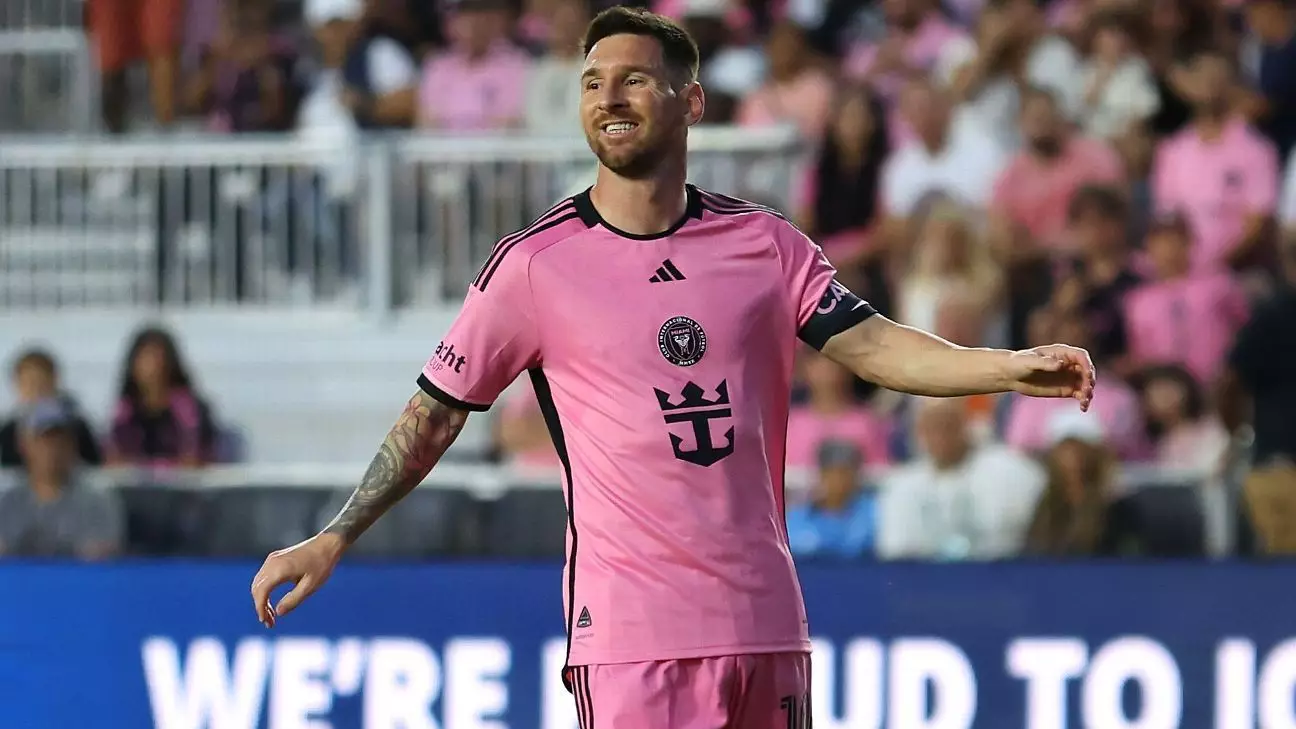Inter Miami forward Lionel Messi has been identified as Major League Soccer’s highest-paid player with a total guaranteed compensation amounting to $20.45 million. This staggering figure only encapsulates Messi’s playing salary, with additional revenue streams including endorsement deals and broadcast agreements augmenting his income. According to industry reports, Messi could potentially earn up to $150 million over the duration of his 2½-year contract with Miami and MLS. The financial prowess of Inter Miami is further underscored by the fact that Toronto FC’s Lorenzo Insigne, who ranks second in compensation with $15.44 million, trails noticeably behind Messi. Additionally, Inter Miami’s Sergio Busquets follows closely behind Insigne with a guaranteed compensation of $8.77 million.
The financial landscape of Major League Soccer exhibits stark disparities when comparing total guaranteed compensations per team. Inter Miami leads the pack with a whopping $41.68 million, setting a new league record that significantly surpasses the financial investments of other clubs. Toronto FC follows behind with $31.41 million, while Chicago Fire comes in third with $25.13 million. Notably, reigning Supporters’ Shield winners FC Cincinnati find themselves towards the lower end of the spectrum with $18.71 million in total guaranteed compensation. The financial distribution within Major League Soccer paints a picture of imbalance, where certain clubs emerge as frontrunners in expenditure while others fall short in financial commitments to their players.
With the league’s median salary experiencing a modest 4.8% increase from $294,500 to $308,750 over the past year, it is evident that the rise in compensation is predominantly concentrated among the top echelon of players. While the average guaranteed compensation for all players has risen by 12.4% to $594,390, the disparity between median and mean salaries highlights the growing disparity within Major League Soccer. This top-heavy distribution of salaries indicates a widening gap between the highest-paid players and those earning more modest compensations within the league.
Major League Soccer’s financial landscape is governed by the collective bargaining agreement (CBA) between the league and the MLS Players Association. Currently in its fourth year, the CBA, which was established in February 2021, is slated to remain in effect until the conclusion of the 2027 season. The terms outlined in the CBA play a pivotal role in shaping player compensations, revenue-sharing agreements, and overall financial dynamics within Major League Soccer. As the league continues to evolve and expand, the impact of the CBA on player salaries and financial structures remains a key determinant of financial equilibrium within Major League Soccer.
The financial landscape of Major League Soccer is marked by a complex interplay of individual player compensations, total team expenditures, and league-wide revenue-sharing agreements. The rise of Inter Miami as a financial powerhouse, coupled with the disparities in compensation across teams, underscores the evolving nature of financial dynamics within the league. As player salaries continue to escalate, and revenue streams from endorsements and broadcast agreements grow, Major League Soccer faces ongoing challenges in maintaining financial equilibrium and ensuring fair compensation for all players involved.

Leave a Reply